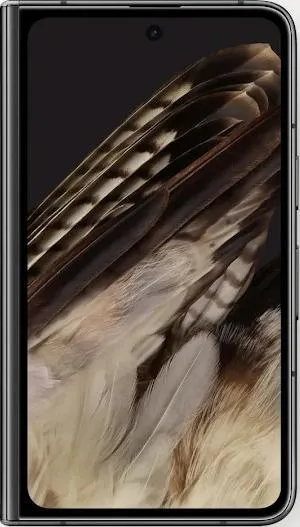1. Specifications Comparison
| Feature | Google Pixel Fold | Asus ROG Phone 8 | Practical Impact |
|---|---|---|---|
| Design | |||
| Form Factor | Foldable | Standard | Pixel Fold offers greater portability when folded and a larger screen when unfolded. ROG Phone 8 is a traditional slab design. |
| Dimensions (mm) | 139.7 x 158.7 x 5.8 (unfolded) | 163.8 x 76.8 x 8.9 | Pixel Fold is significantly wider unfolded but thinner when folded. ROG Phone 8 is taller and thicker overall. |
| Weight (g) | 283 | 225 | Pixel Fold is noticeably heavier. |
| Display | |||
| Display Type | Foldable OLED | LTPO AMOLED | Pixel Fold's folding screen offers versatility. ROG Phone 8's LTPO panel allows for dynamic refresh rate adjustment, saving battery. |
| Size (inches) | 7.6 (unfolded), 5.8 (cover) | 6.78 | Pixel Fold provides a significantly larger main display. |
| Resolution | 1840 x 2208 (unfolded), 1080 x 2092 (cover) | 1080 x 2400 | Pixel Fold boasts a higher resolution on its main display, resulting in sharper images and text. |
| Refresh Rate (Hz) | 120 | 165 | ROG Phone 8 offers smoother scrolling and animations with its higher refresh rate. |
| Peak Brightness (nits) | 1450 | 2500 | ROG Phone 8's display is significantly brighter, improving outdoor visibility. |
| Performance | |||
| Chipset | Google Tensor G2 (5 nm) | Qualcomm Snapdragon 8 Gen 3 (4 nm) | Snapdragon 8 Gen 3 generally offers better CPU and GPU performance compared to Tensor G2. |
| CPU | Octa-core (2x2.85 GHz Cortex-X1 & 2x2.35 GHz Cortex-A78 & 4x1.80 GHz Cortex-A55) | Octa-core (1x3.3 GHz Cortex-X4 & 3x3.2 GHz Cortex-A720 & 2x3.0 GHz Cortex-A720 & 2x2.3 GHz Cortex-A520) | ROG Phone 8's newer CPU architecture should deliver superior performance in demanding tasks and gaming. |
| GPU | Mali-G710 MP7 | Adreno 750 | Adreno 750 provides a significant advantage in graphics processing for gaming and other visually intensive applications. |
| RAM (GB) | 12 | 16 (option available) | ROG Phone 8 offers a higher RAM configuration, benefiting multitasking and demanding applications. |
| Camera | |||
| Main Camera (MP) | 48 | 50 | Both offer high-resolution main cameras. Specific image quality comparisons would require real-world testing. |
| Ultrawide (MP) | 10.8 | 13 | ROG Phone 8 has a slightly higher resolution ultrawide camera. |
| Telephoto (MP) | 10.8 | No dedicated telephoto, but offers 3x optical zoom likely through the main sensor. | Pixel Fold has a dedicated telephoto lens, potentially offering better optical zoom quality. Practical difference needs real-world comparison. |
| Battery | |||
| Capacity (mAh) | 4821 | 5500 | ROG Phone 8 has a larger battery, potentially offering longer battery life. |
2. Key Differences Analysis
Pixel Fold Advantages:
- Foldable Form Factor: Offers a unique combination of portability and a large screen experience.
- Higher Resolution Main Display: Sharper images and text compared to ROG Phone 8.
ROG Phone 8 Advantages:
- Superior Performance: Snapdragon 8 Gen 3 provides a significant performance advantage for gaming and demanding tasks.
- Higher Refresh Rate Display: Smoother scrolling and animations.
- Brighter Display: Better outdoor visibility.
- Larger Battery: Potential for longer battery life.
- More Affordable: Based on the listed prices, the ROG Phone 8 offers better value in terms of performance for the price.
Trade-offs:
- Pixel Fold: Heavier and more expensive for the base model. Lower performance compared to ROG Phone 8.
- ROG Phone 8: Lacks the unique foldable form factor. Lower resolution display.
3. User Profiles & Recommendations
Pixel Fold Ideal User: Professionals and power users who value portability and a large screen for multitasking and content consumption on the go. Users who prioritize the unique foldable experience.
ROG Phone 8 Ideal User: Mobile gamers and performance enthusiasts who prioritize raw processing power, high refresh rates, and long battery life.
4. Decision Framework
Key Questions for Buyers:
- Form Factor Priority: Do you prioritize the portability and large screen experience of a foldable phone, or prefer a traditional slab design?
- Performance Needs: How important is raw processing power and gaming performance?
- Budget Constraints: How much are you willing to spend, considering the price difference and storage options?
My Choice: Asus ROG Phone 8
While the Pixel Fold's folding screen is innovative, the ROG Phone 8's superior performance, brighter and smoother display, larger battery, and lower price make it a more compelling option for me. I prioritize performance, battery life, and value. The Snapdragon 8 Gen 3 provides a substantial real-world advantage for demanding tasks and future-proofing. The brighter display is crucial for outdoor use, and the higher refresh rate enhances the overall user experience. While I appreciate the foldable design's novelty, the ROG Phone 8 better suits my needs and budget. The Pixel Fold's higher resolution is appealing, but the difference is less significant than the performance gap. Ultimately, the ROG Phone 8 delivers a more well-rounded package for my usage.

